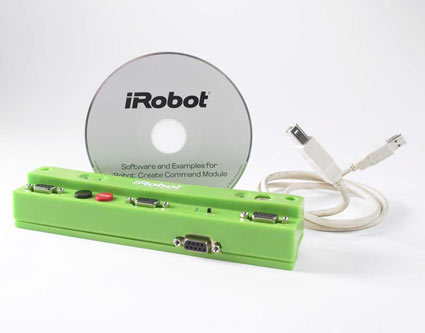The iRobot Create
Robotic R&D with the Son of Roomba
There's a lot more interest in consumer robotics now that companies like iRobot and their vacuum-cleaning Roomba robots have demonstrated that these machines can work in the home. Unfortunately, since the robotic vacuum's commercial success, the development of robots that perform other household chores has been relatively slow. There has been some good progress in the area of robotic lawn mowing, but no real explosion of differently skilled robots on the market. Research and development is essential for progress in any field. The good news is that there are a lot of smart people out there who would love to exploit this emerging market and put their own spin on our robotic dreams of the future. The bad news is that designing and manufacturing a robot can be a prohibitively expensive and time consuming.
When iRobot learned that its Roomba model was so popular with a growing corps of robotics fans, the company decided to make a robot for tinkerers, a robot for programmers; a robot for enthusiasts; a robot that could morph into a range of innovative practical or entertaining shapes and functions.
iRobot chose to call this robot the "Create".
There are a variety of ways to program the Create so that it properly executes your commands. The simplest way is to control the robot with short, downloadable scripts. Advanced users can compose custom programs that take into account feedback from the Create's built-in or add-on sensors.
For the ultimate control, advanced users will want the optional "iRobot Command module". This module is tailored to the most powerful programming tools, allowing developers to write C or C++ programs that will fully control the robot's actions for completely autonomous behavior. In addition to allowing full control of the Create's functions, the command module includes 9 expansion ports that provide an interface to custom hardware.
The Create command module
Get Tom's Hardware's best news and in-depth reviews, straight to your inbox.
Current page: Robotic R&D with the Son of Roomba
Prev Page Robots from Fantasy to Reality Next Page Some Create ExamplesDon Woligroski was a former senior hardware editor for Tom's Hardware. He has covered a wide range of PC hardware topics, including CPUs, GPUs, system building, and emerging technologies.

